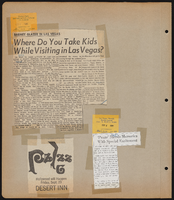Search the Special Collections and Archives Portal
Search Results
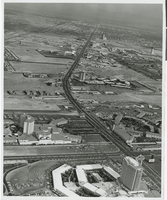
Aerial photograph of the The Strip looking north from the Dunes Hotel (Las Vegas), circa 1968
Date
Archival Collection
Description
Aerial view of the Las Vegas Strip looking north including views of the Dunes, Caesars Palace, The Flamingo, Sands, Frontier, Riviera, Stardust, and Sahara. Stamped on original: "Las Vegas News Bureau. Las Vegas, Nevada, Convention Center. 15651 Don English, Jerry Abbott, Joe Buck, Milt Palmer, John Cook, Terry Todd, Bob Hooper, Wolf Wergin."
Site Name: Las Vegas Strip
Address: Las Vegas Boulevard, Las Vegas, NV
Image
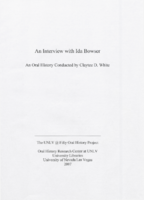
Transcript of interview with Ida Bowser by Claytee D. White, August 30, 2007
Date
Archival Collection
Description
Interview with Ida Bowser conducted by Claytee D. White on August 30, 2007. Born in Tallulah, Louisiana, Bowser came to Las Vegas as a child. Her first job after high school was as a teacher's aide. Later, she worked as a maid at the Sahara and Flamingo hotels. Disenchanted with maid's work, Bowser applied to the welfare office for on-the-job training and began working for the UNLV library, where she remained for thirty-seven years. Bowser recalls Ruby Duncan and the civil rights movement, notable individuals and places, and a discrimination lawsuit.
Text
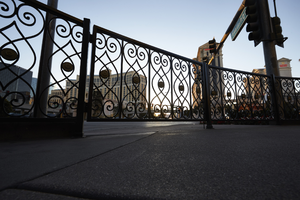
Pedestrian and automobile traffic on the Las Vegas Strip, Las Vegas, Nevada: digital photograph
Date
Archival Collection
Description
Image
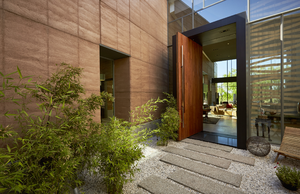
Cavu cusom home entry, Las Vegas, Nevada: digital photograph
Date
Archival Collection
Description
Image
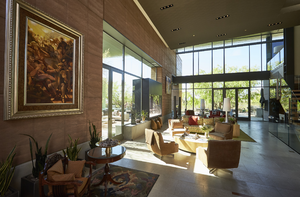
Cavu cusom home great room with rammed-earth wall, Las Vegas, Nevada: digital photograph
Date
Archival Collection
Description
Image

Transcript of interview with Henry Clay Davis by Wendy Christian, March 5, 1978
Date
Archival Collection
Description
On March 5, 1978, collector Wendy Christian interviewed truck driver Henry Clay Davis (born April 19, 1900 in Irondale, Virginia) in his home in Las Vegas, Nevada. This interview covers Henry Clay Davis’s personal life history as a resident of Las Vegas, which includes hunting and fishing. He also discusses employment, the railroad, old hotels, the Davis Dam, and Lake Mead. Additionally, he offers a detailed description of the Helldorado.
Text

Transcript of interview with Janet Savalli by Irene Rostine, September 21, 1996
Date
Archival Collection
Description
Interviewed by Irene Rostine. Janet Savalli's family moved from Phoenix, Arizona, to Henderson, Nevada, in 1945 so her father could work at the Basic Magnesium plant. A few years later, when she was a junior in high school, Janet began her 46-plus years career at the Southern Nevada Telephone Company, which eventually became Sprint. During that period she held several positions, including operator, supervisor, schedule clerk, trainer, investigator, and community relations coordinator. Janet also talks about the atomic bomb testing at Camp Mercury and Camp Desert Rock near Las Vegas. Janet credits the atomic bomb testing with jump-starting the second wave of growth Las Vegas experienced following World War II. This growth had a particular influence on the telecommunications industry's need to expand in Las Vegas.
Text

Transcript of interview with Jerry Engel by Barbara Tabach, March 1, 2016
Date
Archival Collection
Description
Jerry Engel was born in 1930 in New Jersey and spent most of his early life in Long Beach, New York until the family moved westward to Las Angeles. Jerry is a retired Certified Public Accountant and loves to talk about the history of Las Vegas that he observed since arriving in 1953. That was the year that he moved to Las Vegas to join his older brothers, Morris and Phil, in their accounting firm. Their major client at the time was Desert Inn. Another personal connection with local history: the Engel brothers? mother, Esther Katz Engel, was among the early investors in the Moulin Rouge hotel/casino enterprise. Jerry graduated with honors from University of California, Los Angeles in 1951. His accounting career in Las Vegas is highly regarded and he continues to maintain a consulting practice. He remains active within the community and enjoys doing presentations based on his memories of Las Vegas history. Within this interview, Jerry highlights people, casinos and other observations of local history that he came into contact with over the decades. He provides insights about the role of an accountant in the gaming industry. He also discusses the influence of Jewish business leaders in and array of local gaming and non-gaming issues, including the retail world, Jim Crow era segregation, and the astonishing growth of the valley over six decades.
Text

